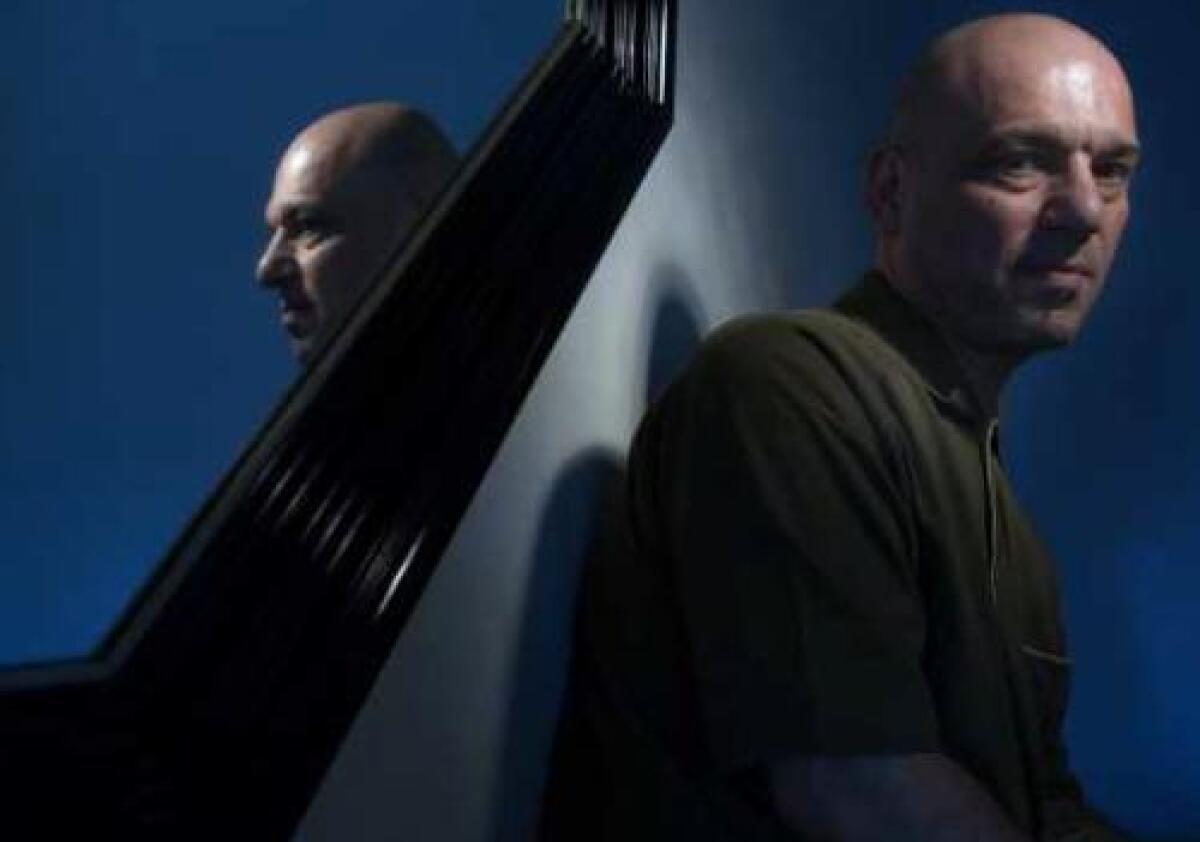The Armenian Navy Band sets sail for America

When music promoter Debbie Ohanian calls from her home in Miami Beach to tip me to some great new band, I always listen. In the past decade, she was one of the pioneers in bringing cutting-edge Cuban bands to the U.S., sometimes at personal risk, as when she staged the first concert in Miami for Los Van Van, despite violent protests.
With the Cuban scene fading, I hadn’t heard from Ohanian in a while -- until she called to rave about something that was totally foreign to me. She hadn’t been so excited about music since those Cuban bands had rocked her world.
She was talking about the Armenian Navy Band, a 12-piece folk-fusion ensemble she had heard live for the first time in 2006 during a visit to her family’s ancient homeland, a country with its own language and alphabet and a culture that predates the birth of Christ. “It was one of those life-changing moments,” says Ohanian of the concert she attended in Yerevan. “I thought to myself, ‘I feel sorry for anybody who’s not sitting here tonight.’ ”
FOR THE RECORD:
Armenian band: An article in Saturday’s Calendar section about the Armenian Navy Band, making its U.S. debut Friday at Walt Disney Concert Hall, said “Armenians carry in their collective DNA the memory of what they consider a genocide by the Turks in the early 20th century.” The statement should not have qualified the term “genocide”; historical evidence and research support the accuracy of the term. Also, the phone number for tickets was wrong. The correct number is (818) 808-8222. —
L.A. audiences won’t have to travel 7,000 miles to share in Ohanian’s epiphany. Next week, the Armenian Navy Band makes its U.S. debut at Disney Hall in a benefit concert sponsored by Artists for Kids, a Glendale-based nonprofit advancing the arts among youth. The band is relatively unknown on these shores, though it’s been around for a decade and has accumulated accolades throughout Europe.
It’s led by songwriter and multi-instrumentalist Arto Tunçboyaciyan, who was born in Turkey but who has lived in this country for more than a quarter-century. Arto, as he is known, dubs his sound “avant-garde folk,” a blend of traditional Armenian styles and modern elements, including touches of jazz improvisation.
The music has that plaintive quality you also hear in flamenco or the blues that comes from people surviving centuries of repression, rejection and exile. Armenians carry in their collective DNA the memory of what they consider a genocide by the Turks in the early 20th century.
Arto’s voice sounds warbly, wounded and nasally. Yet it carries such stunning power and spirituality it seems to rise right from the slopes of Mt. Ararat, the dramatic snow-covered peak where Noah’s Ark is believed to have come to rest and which overlooks Armenia with a mystical presence.
The music features beautiful, alluring melodies as well as entrancing percussion, thrilling brass and gentle strings. Come to think of it, the sound has all the elements of Afro-Cuban music, though its instrumentation is unique, including the traditional duduk, zurna and kamancha. Anahit Artushyan, the only woman in the band, plays the kanun, an ancient Middle Eastern string instrument. American listeners may hear strains of Russian or Middle Eastern music in this Armenian mix, not unexpected for a country that borders Turkey, Iran and Georgia.
The band’s name is satirical, since Armenia is land-locked. Arto is fond of explaining the moniker metaphorically. “Armenia has no seas,” he says in heavily accented English, “so how are you going to move a boat without water? If you are honest and respectful in your ideology, you can move because, when people receive us in their heart, they are becoming our sea.”
Arto has lived mostly in New York and New Jersey, where he keeps a home with his wife, Delia, who is half Colombian, half Greek, and travels frequently to Armenia. I met him at his second-floor apartment in Burbank, where he’s staying while planning a permanent move to Los Angeles. He was preceded here by his grown children -- Valantin, a USC communication student, and Seto, an aspiring rapper who has recorded with his father.
As we approach his modest building, Ohanian (here for the show) looks for other Armenian names -- characterized by “yan” and “ian” endings -- on the directory. She spots one, and mentions it later to Arto during a discussion of the Armenian diaspora, which led to large exile communities in Argentina, Venezuela and California, especially Glendale. But any Armenian who expects to hear uncritical cultural cheers in Arto’s music would be disappointed. In one CD, “How Much Is Yours?” from 2005, he raises pointed questions meant to challenge what he perceives as the errors of his people’s ways.
In person, his critiques are less delicate. He criticizes fellow Armenians for materialism and corruption. He labels as wannabes the Armenian teenagers who speed around in souped-up black BMWs in a reckless drive to quickly attain and flaunt the American dream. But perhaps most pointedly, he slams his countrymen for exploiting the public’s sympathy for the genocide, saying mockingly, “If I cry a little bit more, maybe they give me more money.”
He has some advice for the young Armenians and Latinos who have at times had violent confrontations considered ethnically motivated. “It’s really sad because in reality they both are coming from the same type of life,” he says. “Their anger is because somebody else overpowers them. Instead of fighting with each other, they should come together and create positive art.”
Arto says he doesn’t feel close to the local Armenian community. In fact, he has invented his own country, “Artostan,” the title of a solo CD from 2005, which reflects the idea that he marches to his own drummer.
“I am a mirror everywhere, and some people don’t like to see themselves,” he says with a knowing smile.
Of course, the music is as much celebratory as satirical. There’s the sheer joy in melody and rhythm, highlighted by his show-stopping performance with just a Coke bottle and a tambourine. But he also writes songs extolling respect for nature, the joy of cooking with family and the need to respect all the world’s cultures.
With a stocky build and a baseball cap covering his bald head, Arto doesn’t have the look of a star. But his hands have the mark of a real musician. His thick, knobby fingers show the ravage of constant percussion practice, which brought complaints from downstairs neighbors. Arto now beats on a slab of granite he set up on a chair. The pain of smacking stone with his bare hands is the price he pays to preserve the peace, love and respect he promotes as his core values.
“Look, I left my body to represent everybody,” he says. “Meaning, I am not living life as an Armenian. I am living life as a human being, like everybody else.”
Arto Tunçboyaciyan and the Armenian Navy Band perform at 8 p.m. Friday at Walt Disney Concert Hall, 111 S. Grand Ave., Los Angeles. $43-$106. For tickets, call (818) 522-2662 or go to ticketmaster.com.
More to Read
The biggest entertainment stories
Get our big stories about Hollywood, film, television, music, arts, culture and more right in your inbox as soon as they publish.
You may occasionally receive promotional content from the Los Angeles Times.










